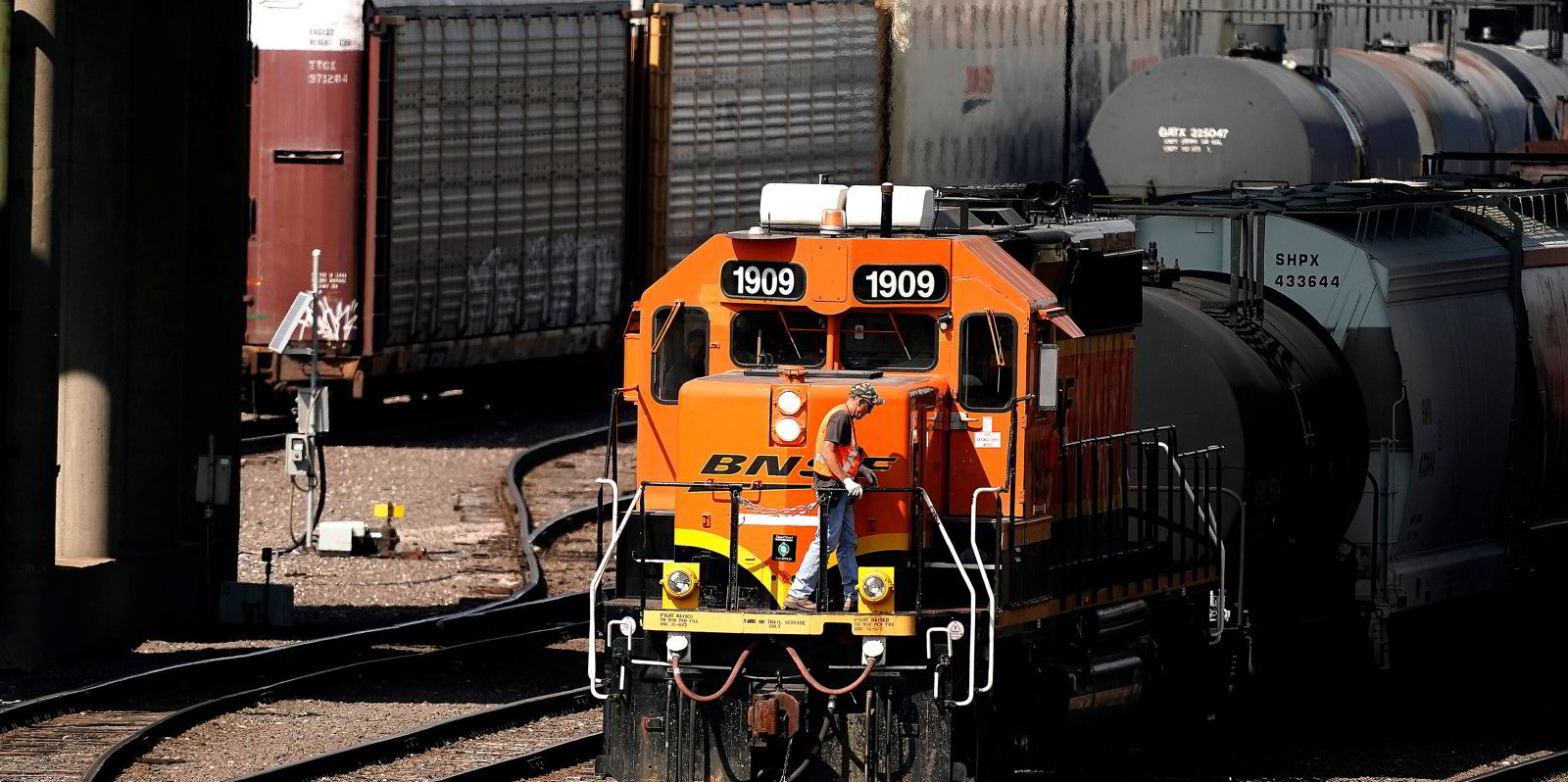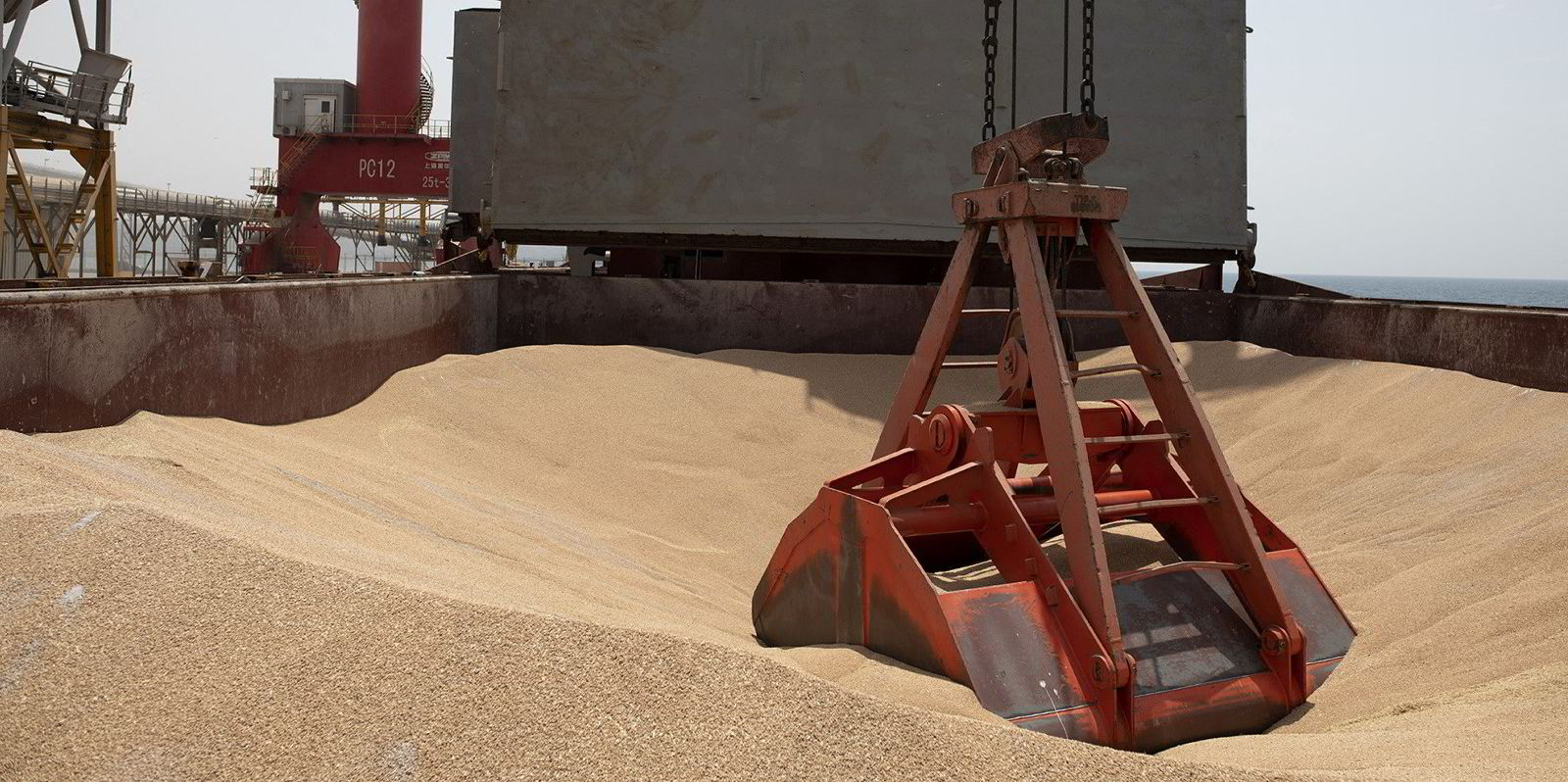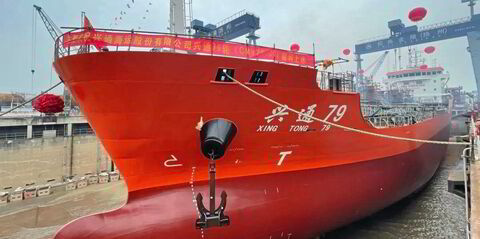Railroads and unions are working to avert a strike that could halt freight trains across the US and, if it lasts, create snarls at ports.
But experts who track railroads and shipping are hopeful that even if a work stoppage does take place, US officials would not allow it to continue long enough to have a significant impact.
Railroads and unions are facing a Friday deadline on talks that impact some 125,000 workers as the administration of US President Joe Biden considers steps to prevent a strike from bringing more supply chain and inflation pressures.
John McCown, a former liner industry executive who now tracks container shipping as founder of Blue Alpha Capital, said a railroad halt would have immediate impacts on shipping.
Those would be felt particularly in the container shipping sector, and most painfully on the US West Coast, where a large share of transpacific box imports are moved inland by rail.
“The railroad strike would be devastating to moving containers,” he told TradeWinds.
McCown said an extended rail strike could lead to a shift of container shipments to services that travel to the Atlantic Seaboard and Gulf Coast, where a larger share of inland traffic from ports is carried by trucks, similar to what was seen at the height of port congestion crisis during the Covid-19 pandemic.
It could also impact container freight rates, although he pointed out that much of actual trade is done on long-term contracts.
Rates dip
Transpacific rates on the Freightos Baltic Index have so far yawned at the prospect of a strike, falling to just under $3,900 per feu on Wednesday from $4,300 a week earlier.
Ten of 12 unions involved in the railroad labour talks reached at least tentative agreements, but two unions are holding out. On Wednesday, the International Association of Machinists and Aerospace Workers said its members rejected its tentative labour agreement, the Wall Street Journal reported.
Rather than pay, the main issue was attendance policies that penalised workers for unscheduled absences.
Amid the uncertainty, railroads are already preparing for the possibility of a strike.
Railroads take steps
On Friday, the American Association of Railroads said it is embargoing shipments of hazardous materials.
That was a prelude to further steps by railroads to shut down their networks. Norfolk Southern, for example, has already started closing down gates to intermodal traffic.

“Railroads are in the process of shutting things down,” said Amit Mehrotra, an analyst who covers both rail and ocean shipping stocks for Deutsche Bank.
He told TradeWinds that railroads are hesitant to push cargo into their networks that may become “hyper congested” if there’s a strike.
Railroads are in the process of shutting things down.
Amit Mehrotra
“The rails are proactively stopping anything new from coming into the network, so that when we’re on the other side of this tumultuous environment, the recovery can be more fluid,” Mehrotra said.
There are widespread expectations that Washington will step in to prevent an extended strike.
White House press secretary Karine Jean-Pierre said on Wednesday that Biden and his cabinet have been in talks with unions and companies involved in an effort to prevent a strike.
She said those negotiations have been going on for months.
“All parties need to stay at the table, bargain in good faith to resolve outstanding issues, and come to an agreement,” Jean-Pierre said in a press briefing. “A shutdown of our rail system is an unacceptable outcome for our economy and the American people, and all parties must work to avoid just that.”
Will Congress save the day?
Congress is also expected to act to prevent a rail strike from dragging on.
Mehrotra said he believes a strike will likely be quick, lasting two days like the nationwide rail strikes in 1992.
And the impact on shipping would not be significant, particularly if it happens over the weekend, adding to a week of slowing operations.
“I don’t think that’s a big issue at all. I think it’s a really manageable issue,” he said.
The risk is the potential that Congress allows the strike to drag on, which he sees as unlikely.
“The other question is, how quickly are the railroads able to bounce back from a slowdown or stoppage?” the analyst said. “I’m actually pretty optimistic because I think they’re taking proactive measures today.”





